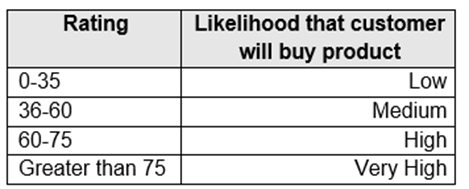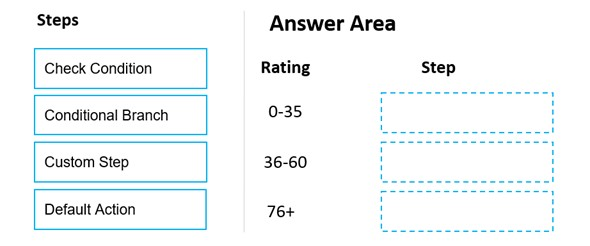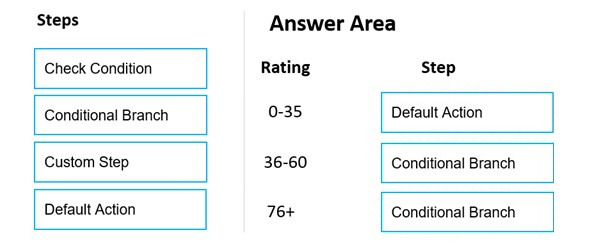DRAG DROP -
A company is creating a business process flow in Power Automate to analyze the probability that a customer will buy a specific product.
The company uses ratings from zero to one hundred. The company assigns likelihoods based on the following table:

You need to define the business process steps. All logic must be included in a single evaluation statement.
Which step should you use? To answer, drag the appropriate steps to the correct ratings. Each step may be used once, more than once, or not at all. You may need to drag the split bar between panes or scroll to view content.
NOTE: Each correct selection is worth one point.
Select and Place:

